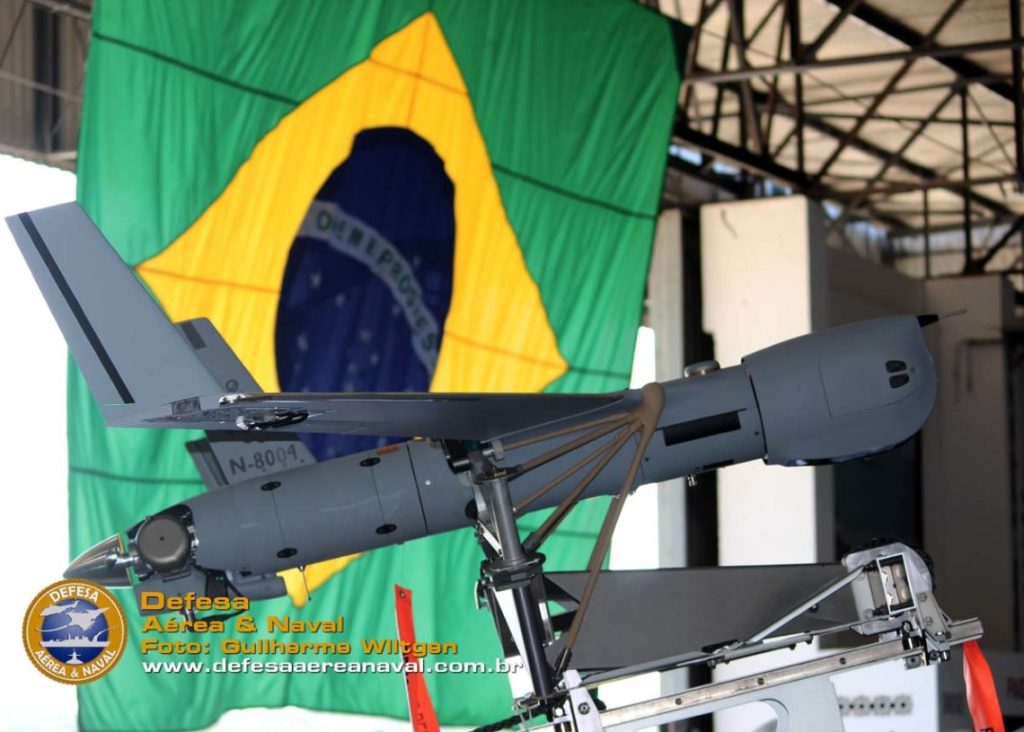
QE-1 Squadron turns 2 years old
Original article by Guilherme Wiltgen. Translated from Portuguese (Brazilian) via Google Translate.
the 1st Remotely Piloted Aircraft Squadron (EsqdQE-1) was created by Ordinance No. 90/MB/MD of March 29, 2021, by the then Navy Commander AE Ilques Barbosa Júnior, and activated at the São Pedro da Aldeia Naval Air Base on July 5, 2022.
The new Squadron is subordinate to the Naval Air Force Command and will have the purpose of contributing to the decision-making process of planning and employment of Naval Power through the use of Remotely Piloted Aircraft (ARP).
The activation of Squadron QE-1 began the 5th phase of Brazilian Naval Aviation, with Frigate Captain Fabio Bernardo Nunes being appointed as the first Commander.
The military ceremony took place at the São Pedro da Aldeia Naval Air Base and was attended by the Commander of the Navy, Fleet Admiral Almir Garnier Santos, the Commander of Naval Operations, Fleet Admiral Marcos Sampaio Olsen, the General Director of Navy Material, Fleet Admiral José Augusto Vieira da Cunha de Menezes, the Commander in Chief of the Fleet, Vice Admiral Arthur Fernando Bettega Correa and the Commander of the Naval Air Force, Rear Admiral José Augusto Augusto José da Silva Fonseca Junior.
The Harpy Squadron
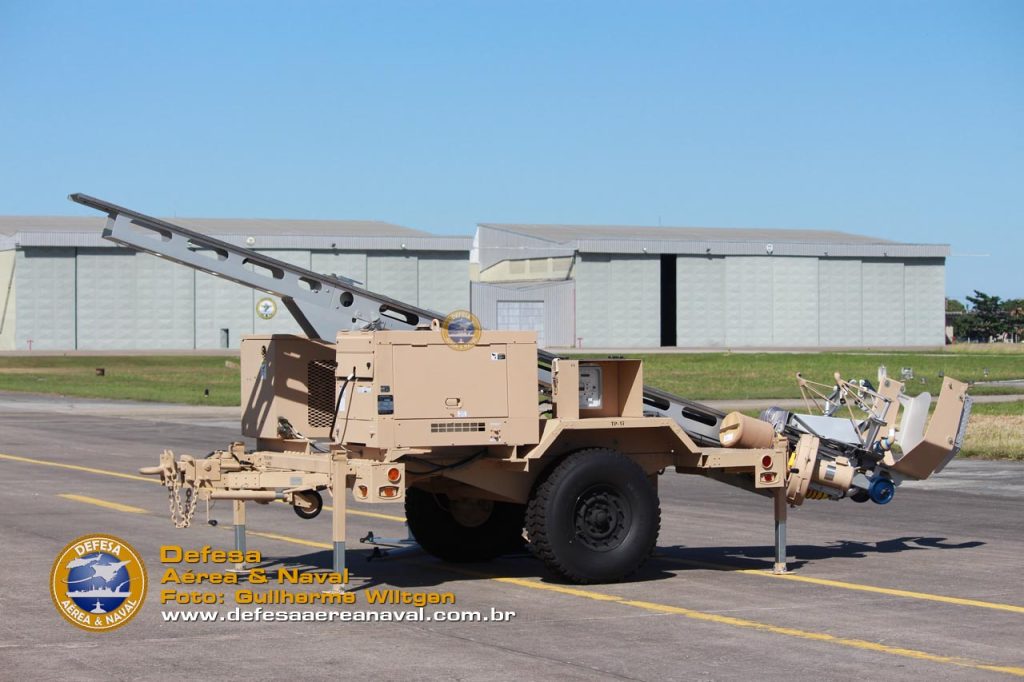
The new Squadron chose as its symbol the Harpy Eagle, one of the largest birds of prey in the world, found in Brazil’s Amazon and Atlantic Forest regions. The QE-1 has a crew of 37 military personnel, including ten officers (eight pilots trained at the manufacturer) and 27 enlisted men, all from the Navy’s various fixed-wing and rotary-wing Squadrons.
Its aeronautical assets consist of six Embedded Remotely Piloted Aircraft Systems (EARS), designated RQ-1 ScanEagle with registrations N-8001 to N-8006, two launchers (one onboard and one on land) and two recovery systems. The Harpia Squadron shares the “ALFA” hangar of the HA-1 Squadron, located at the São Pedro da Aldeia Naval Air Base (BAeNSPA).
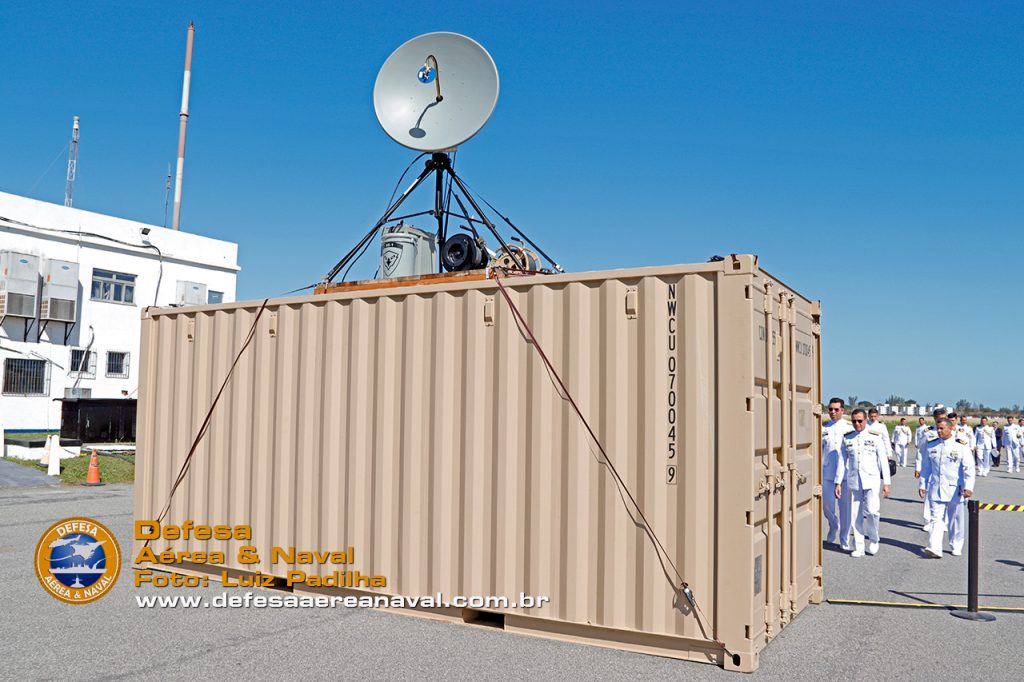
On March 23 and 25, 2022, the Deployment Center of the 1st Remotely Piloted Aircraft Squadron (NI-EsqdQE-1) received from the Material Sector the equipment that makes up the ScanEagle Embedded Remotely Piloted Aircraft System (SARP-E). The 25 tons of material were transferred by air from the United States of America to Brazil and nine trucks carried all the material and equipment to the facilities of the future QE-1 Squadron.
First flights
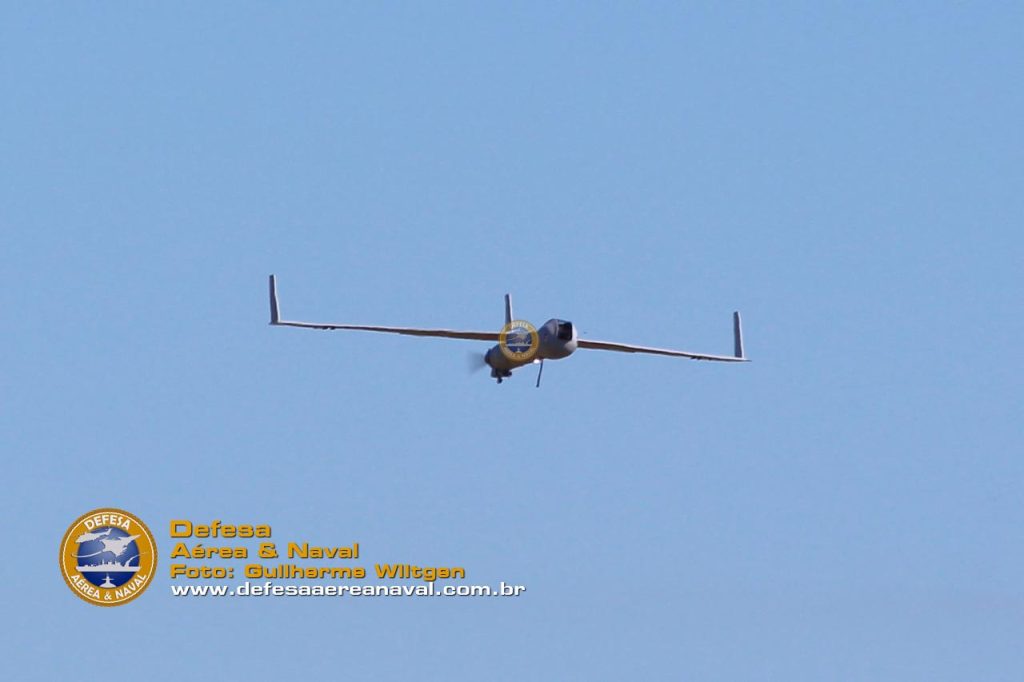
The first launch of ScanEagle was carried out on the afternoon of 06/27/22, at the São Pedro da Aldeia Naval Air Base, using the RQ-1 N-8001.
On May 3, the first night launch of a Remotely Piloted Aircraft was carried out in the Brazilian Navy, an important operational milestone for the Squadron, beginning the use of its RQ-1 ScanEagle aircraft.
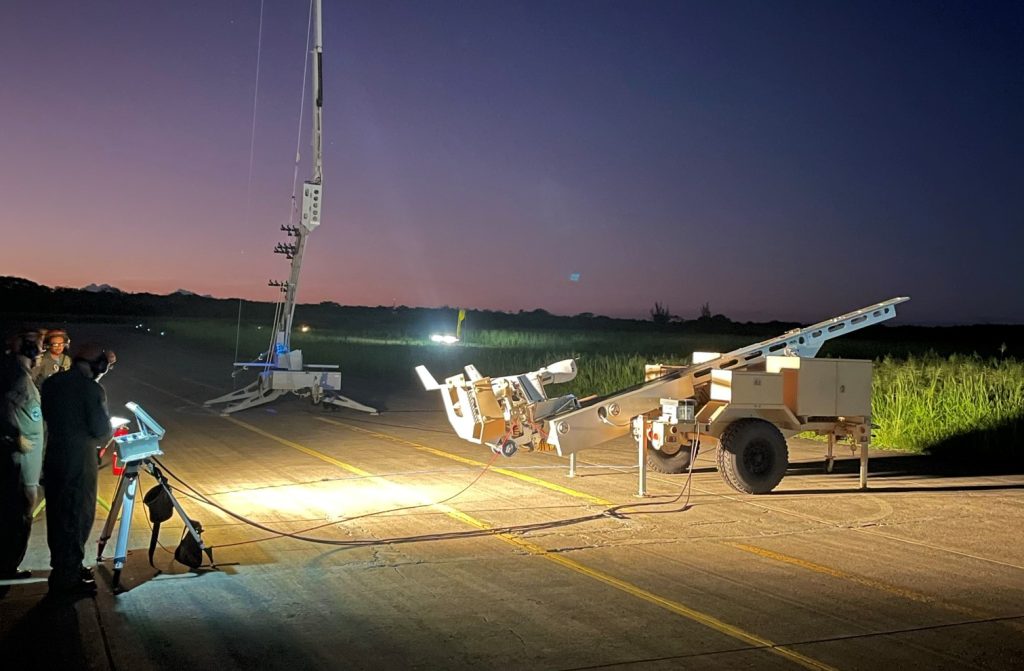
The first night flight took place on September 19, with the launch of the ScanEagle configured with the MWIR 3.5 camera, which allows obtaining night images due to the use of the infrared spectrum, and can be used in nighttime clarification missions in support of Special Operations, Actions against Cross-border and Environmental Crimes, Humanitarian Operations, Disaster Monitoring and others.
On the same date, another important operational milestone was achieved with the first double launch of ScanEagle on the same day, totaling approximately 10 hours of flight, with the first ScanEagle being launched at 10:00h and the second collected at 22:00h.
Onboard operations
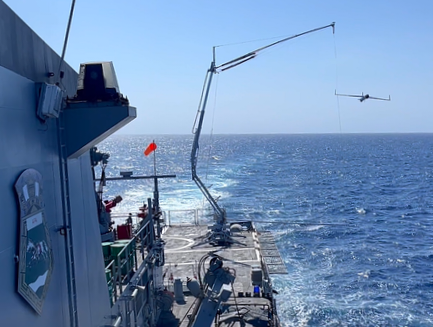
On November 21, 2022, the 1st Remotely Piloted Aircraft Squadron (QE-1) carried out, for the first time, the flight from the Ocean Patrol Vessel Apa (P-121).
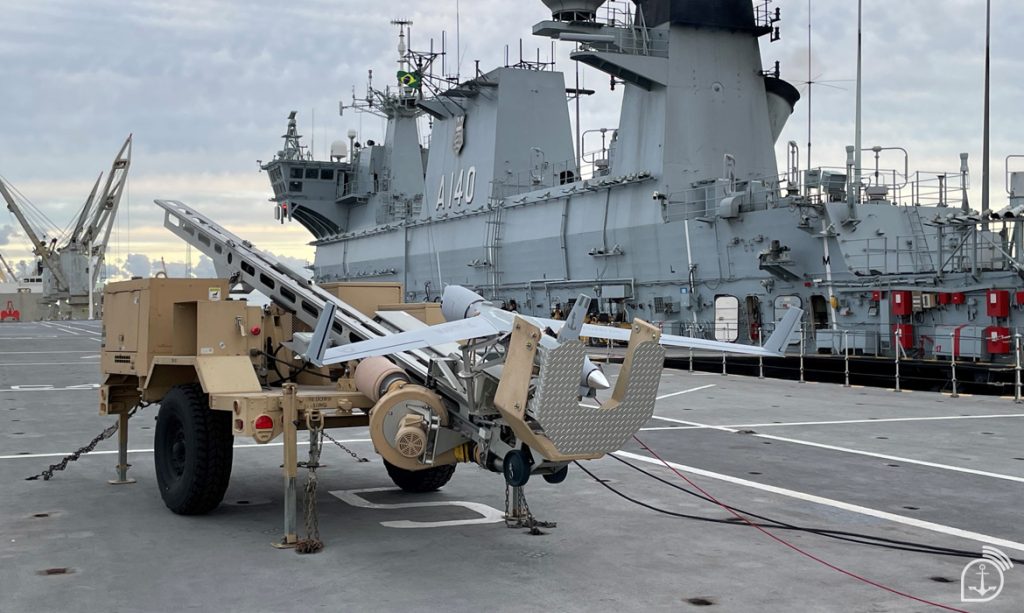
On June 28, 2024, docked at the Port of Rio Grande (RS), the Multipurpose Aircraft Carrier (NAM) Atlântico (A 140) launched the RQ-1ScanEagle for the first time, with the aim of identifying the situation of the places most affected by flooding in Rio Grande do Sul.
The next step is to launch and retrieve the vessel while it is underway.

The start of embarked operations of EsqdQE-1 represents a milestone for Naval Aviation by validating the contribution of SARP-E to the benefit of the Brazilian Squadron.
Its current Commander is Frigate Captain Raphael Estrella Nogueira.
Ex Occulto Investigare Et Agnoscere
(Of the Hidden, Clarify and Identify)
Original in Portuguese (Brazilian)

o 1º Esquadrão de Aeronaves Remotamente Pilotadas (EsqdQE-1) foi criado pela Portaria nº 90/MB/MD de 29 de março de 2021, pelo então Comandante da Marinha AE Ilques Barbosa Júnior, e ativado na Base Aérea Naval de São Pedro da Aldeia no dia 05 de Julho de 2022.
O novo Esquadrão está subordinado ao Comando da Força Aeronaval e terá o propósito de contribuir com o processo decisório de planejamento e emprego do Poder Naval por meio do emprego de Aeronaves Remotamente Pilotadas (ARP).
A ativação do Esquadrão QE-1 iniciou a 5ª fase da Aviação Naval brasileira, sendo nomeado como primeiro Comandante o Capitão de Fragata Fabio Bernardo Nunes.
A cerimônia militar ocorreu na Base Aérea Naval de São Pedro da Aldeia e contou com as presenças do Comandante da Marinha, Almirante de Esquadra Almir Garnier Santos, do Comandante de Operações Navais, Almirante de Esquadra Marcos Sampaio Olsen, do Diretor Geral de Material de Marinha, Almirante de Esquadra José Augusto Vieira da Cunha de Menezes, do Comandante em Chefe da Esquadra, Vice-Almirante Arthur Fernando Bettega Correa e do Comandante da Força Aeronaval, Contra Almirante José Augusto Augusto José da Silva Fonseca Junior.
O Esquadrão Harpia

O novo Esquadrão escolheu como seu símbolo a Harpia, uma das maiores aves de rapina do mundo, encontrada no Brasil na região da Amazônia e da Mata Atlântica. O QE-1 possui uma tripulação composta por 37 militares, sendo dez oficiais (oito pilotos formados no fabricante) e 27 praças, todos oriundos dos diversos Esquadrões de asa-fixa e rotativa da Marinha.
O seu acervo aeronáutico é composto por seis Sistemas de Aeronaves Remotamente Pilotadas Embarcado (SARP-E), designadas RQ-1 ScanEagle com matrículas N-8001 a N-8006, dois lançadores (um embarcado e um terrestre) e dois sistemas de recolhimento. O Esquadrão Harpia compartilha o hangar “ALFA” do Esquadrão HA-1, localizado na Base Aérea Naval de São Pedro da Aldeia (BAeNSPA).

Nos dias 23 e 25 de Março de 2022, o Núcleo de Implantação do 1º Esquadrão de Aeronaves Remotamente Pilotadas (NI-EsqdQE-1) recebeu do Setor de Material, os equipamentos que compõem o Sistema de Aeronaves Remotamente Pilotadas Embarcado (SARP-E) ScanEagle. As 25 toneladas de material foram transladadas por meio do modal aéreo dos Estados Unidos da América para o Brasil e nove carretas conduziram todo o material e os equipamentos até as instalações do futuro Esquadrão QE-1.
Primeiros voos

O primeiro lançamento do ScanEagle foi realizado na tarde do dia 27/06/22, na Base Aérea Naval de São Pedro da Aldeia, sendo utilizado o RQ-1 N-8001.
No dia 3 de maio, foi realizado o primeiro lançamento noturno de uma Aeronave Remotamente Pilotada na Marinha do Brasil, um importante marco operativo para o Esquadrão, iniciando o emprego de suas aeronaves RQ-1 ScanEagle.

O primeiro voo noturno ocorreu em 19 de setembro, com o lançamento do ScanEagle configurado com a câmera MWIR 3.5, que permite a obtenção de imagens noturnas em virtude do aproveitamento do espectro infravermelho, podendo ser empregada em missões noturnas de Esclarecimento em apoio às Operações Especiais, Ações contra Delitos Transfronteiriços e Ambientais, Operações Humanitárias, Monitoramento de Desastres e outras.
Nessa mesma data, outro importante marco operativo foi alcançado com o primeiro lançamento duplo do ScanEagle em um mesmo dia, totalizando cerca de 10 horas de voo, tendo sido lançado o primeiro ScanEagle às 10:00h e o segundo recolhido às 22:00h.
Operações embarcadas

Em 21 de novembro de 2022, o 1º Esquadrão de Aeronaves Remotamente Pilotadas (QE-1) realizou, pela primeira vez, o voo a partir do Navio-Patrulha Oceânico Apa (P-121).

No dia 28 de junho de 2024, atracado no Porto de Rio Grande (RS), o Navio-Aeródromo Multipropósito (NAM) Atlântico (A 140) lançou pela primeira vez o RQ-1ScanEagle, com o objetivo de identificar a situação dos locais mais afetados pelas enchentes no Rio Grande do Sul.
A próxima etapa é realizar o lançamento e recolhimento com o navio navegando.

O início das operações embarcadas do EsqdQE-1 representa um marco para a Aviação Naval ao validar a contribuição dos SARP-E em prol da Esquadra Brasileira.
Seu atual Comandante é o Capitão de Fragata Raphael Estrella Nogueira .
Ex Occulto Investigare Et Agnoscere
(Do Oculto, Esclarecer e Identificar)
Read More
Recent News
Insitu anticipates adding payloads to ScanEagle and Integrator, finds FLARES customer
Unmanned aerial vehicle (UAV) manufacturer Insitu intends to introduce a suite of new capabilities over the next five years
Read More »ScanEagle Deployed on The Frigate Canarias Assists in the Liberation of a Ship Kidnapped by Pirates in Somali Waters
ScanEagle assists in the release of the ship ABDULLAH and its 23 crew members.
Read More »Insitu Celebrates 30 Years of Uncrewed Aircraft Innovation Excellence at Sea-Air-Space
Insitu reflects on three decades of autonomous flight experience and historic moments while building the future of long-endurance, field-proven Uncrewed Aircraft Systems (UAS)
Read More »